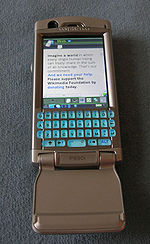
The S60 Platform is a discontinued software platform for smartphones that runs on top of the Symbian operating system. It was created by Nokia based on the 'Pearl' user interface from Symbian Ltd. It was introduced at COMDEX in November 2001 and first shipped with the Nokia 7650 smartphone. The platform has since seen 5 updated editions. Series 60 was renamed to S60 in November 2005.
Sony Mobile Communications Inc. was a multinational telecommunications company founded on October 1, 2001, as a joint venture between Sony Corporation and Ericsson. It was originally incorporated as Sony Ericsson Mobile Communications, and headquartered in London, England, until Sony acquired Ericsson's share in the venture on February 16, 2012. On April 1, 2021, Sony integrated its electronics businesses including Sony Mobile into one company called Sony Corporation.

UIQ is a discontinued software platform based upon Symbian OS, created by UIQ Technology AB. It is a graphical user interface layer that provides additional components to the core operating system, to enable the development of feature-rich mobile phones that are open to expanded capabilities through third-party applications.

The Sony Ericsson P900 is a Symbian OS v7.0 based smartphone from Sony Ericsson.
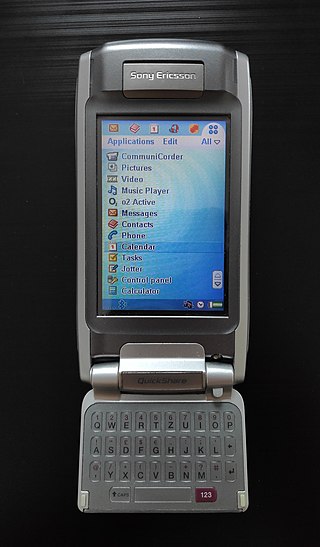
The Sony Ericsson P910 is a mobile phone by Sony Ericsson introduced in 2004 and the successor of the Sony Ericsson P900. The P910 has a full QWERTY keyboard on the back of the flip. The biggest change from the P900 to the P910 is that the P910 supports Memory Stick PRO Duo and the phone's internal memory has been upped from 16 MB to 64 MB. Although Memory Stick PRO Duo comes in larger capacities, the maximum supported by the P910i is 2 GB. It is powered by an ARM9 processor clocked at 156 MHz and runs the Symbian OS with the UIQ graphical user interface. The touchscreen displays 262,144 colours, as opposed to the P900's 65,536 (16-bit). It comes in three versions:
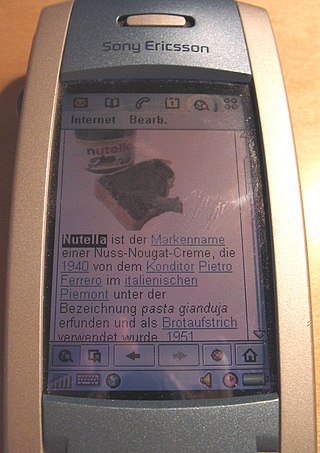
The Sony Ericsson P800 is a mobile phone introduced in 2002 based upon UIQ version 2.0 from Sony Ericsson. The P800 is considered the successor of the Ericsson R380, and initial design work was done within Ericsson, but it was produced after Sony & Ericsson merged their mobile phone businesses.

Sony Ericsson M600 is a 3G mobile phone based upon the UIQ 3 platform. It was announced on February 6, 2006 and is the first and only product of the M series of handsets from Sony Ericsson.

The Sony Ericsson W950i is the third UIQ 3 smartphone based on Symbian OS v9.1. It was announced on February 13, 2006, a week after the announcement of the Sony Ericsson M600.

UIQ Technology AB was a Swedish company that developed and licensed the UIQ software based on Symbian OS which was used in smartphone offerings from Sony Ericsson, Motorola, BenQ and Arima. They were based in the Soft Center Science & Research Park in Ronneby, Sweden, and at the time of its closure in 2009 was jointly owned by Motorola and Sony Ericsson.

The BlackBerry Pearl was a series of smartphones developed by Research In Motion, and was the first BlackBerry device with a camera and media player. It was originally released on September 12, 2006. T-Mobile was the first US carrier to release the phone as a carrier device. The last BlackBerry Pearl released was the 9100 series on May 13, 2010. After this model was cleared out, RIM discontinued the Pearl series.
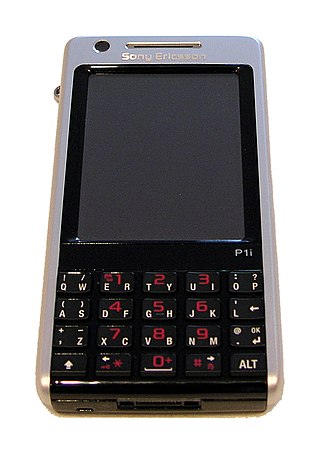
The Sony Ericsson P1 is a mobile phone and the successor of the P990. It was the last of the Sony Ericsson "P" Smartphone series, introduced in 2002 with the Sony Ericsson P800 and it integrates many of the hardware features of its predecessor the P990 in the form factor of the M600. It was announced on 8 May 2007. There is a Chinese version of P1 called P1c. Compare with P1/ P1i, P1c lacks of 3G, thereby using EDGE which is much slower but more available especially in the US and parts of Europe.

The Sony Ericsson W960i is a 3G phone that Sony Ericsson announced in June 2007, as an upgrade to the W950.
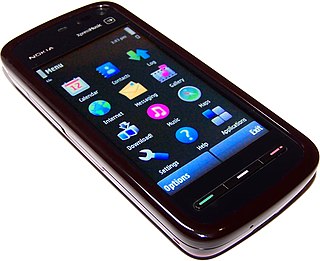
Nokia 5800 XpressMusic is a smartphone part of the XpressMusic line, announced by Nokia on 2 October 2008 in London and started shipping in November of that year. Code-named "Tube", it was the first touchscreen-equipped S60 device by Nokia – essentially it was the first device to run Symbian^1, also known as S60 5th Edition, the touch-specific S60-based platform created by the Symbian Foundation. The touchscreen features tactile feedback.

The Sony Ericsson Satio (U1) is a smartphone, announced by Sony Ericsson at the Mobile World Congress in Barcelona, Spain on 15 February 2009 as the Idou. It was released on 7 October 2009 in the UK in 3 colour schemes: Black, Silver and Bordeaux (Red).
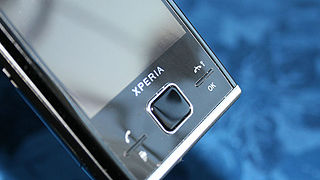
The Xperia X2, announced in September 2009, is a smartphone of the Xperia series by Sony Ericsson. It is the successor to the X1. Features include a 3.2-inch touchscreen, a sliding arc keyboard, an 8.1 MP camera, Wi-Fi, GPS, and 3G, among others. It runs Windows Mobile 6.5 and the home screen can be customised to the normal Windows Mobile 6.5 home screen, Xperia panels, or an isometric pixel art city.

The Sony Ericsson Xperia X10 is a 2010 high end smartphone in the Xperia series designed by Sony Ericsson. It was the first Sony Ericsson smartphone to run the Android operating system, and was designed to be the successor of the Xperia X2. The phone was shipped with Android 1.6 (Donut), but an upgrade to 2.1 (Eclair) was made available starting 31 October 2010, with a gradual international rollout. Originally, Sony Ericsson stated that the X10 would not receive an upgrade to Android 2.2 (Froyo) or beyond, but the phone was later upgraded to 2.3.3 (Gingerbread) with the updates starting on 29 July 2011.

The Sony Ericsson Vivaz (U5i) is a smartphone, announced by Sony Ericsson on 21 January 2010. It was released on 5 March 2010 in the color schemes Moon Silver, Cosmic Black, Galaxy Blue and Venus Ruby.

The Nokia 6700 Slide is a midrange slide mobile phone released by Nokia in May 2010. It was produced in a variety of different colors and had a metal case.
Nokia's strategic nomenclature can be traced back in 2005 when the Nseries line was launched, offering devices with flagship specifications and premium hardware at various price points. These devices were considered the "bread and butter" of the company and were often positioned to showcase their latest technologies. Thanks to the newfound consumer and enterprise interest in smartphones at the time, the company introduced four additional collections to diversify their product portfolio and meet demands in most market segments. These new phone series were named Eseries, targeting small business and enterprise customers; Xseries, providing consumer-grade multimedia-focused devices; Cseries, which Nokia used to target both the low-end and mid-range market segments; and Tseries, for devices exclusive to the Chinese market.
